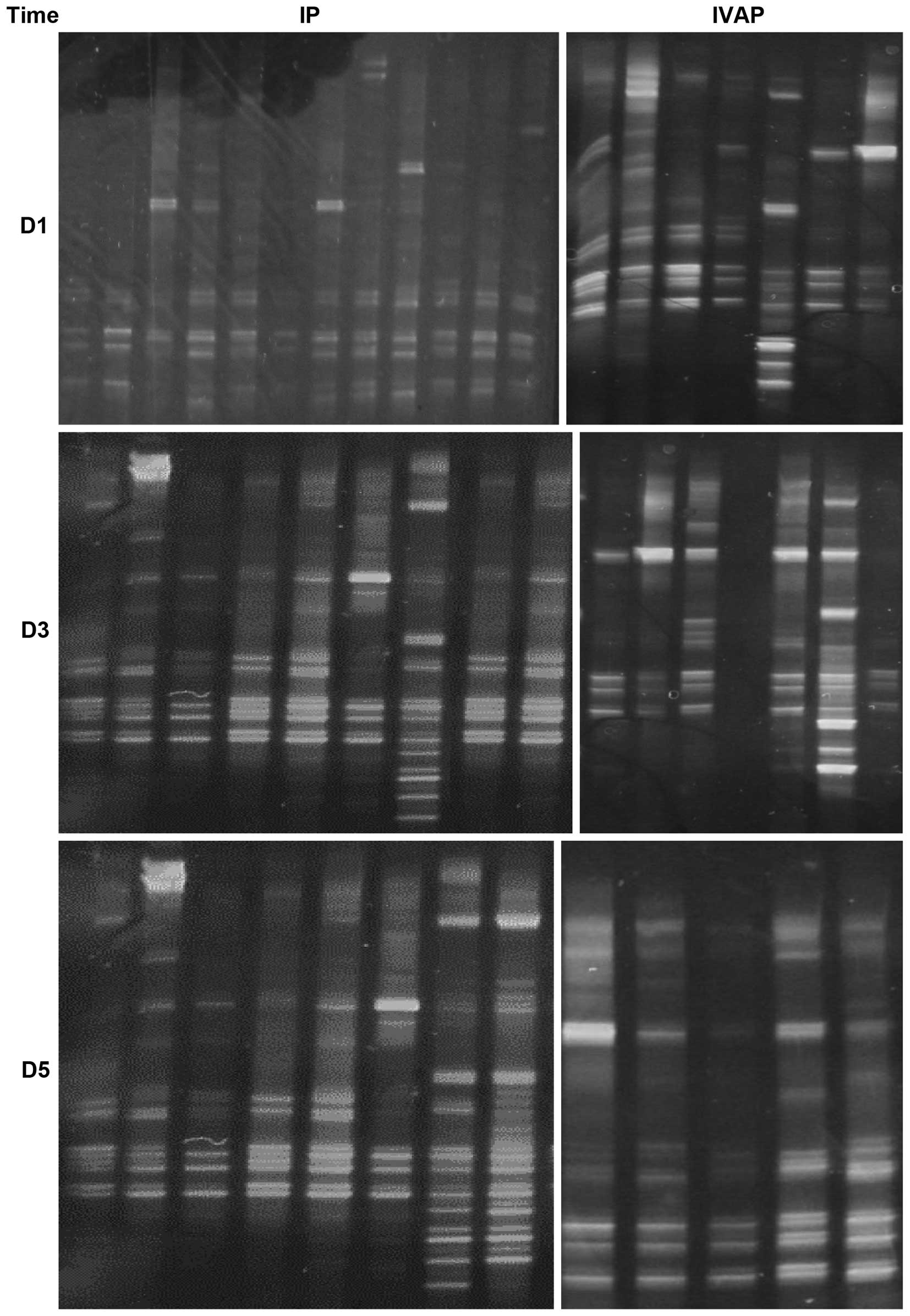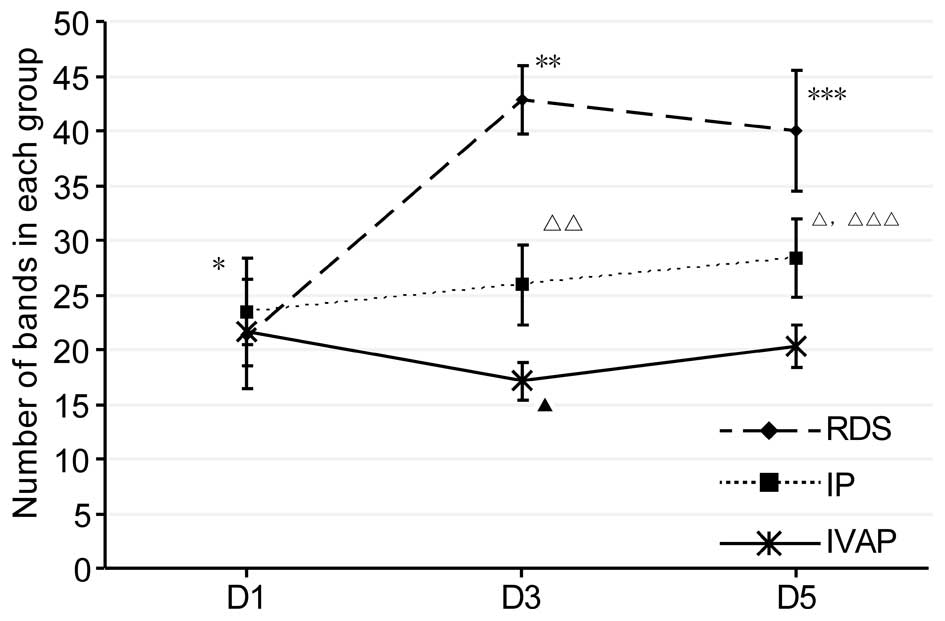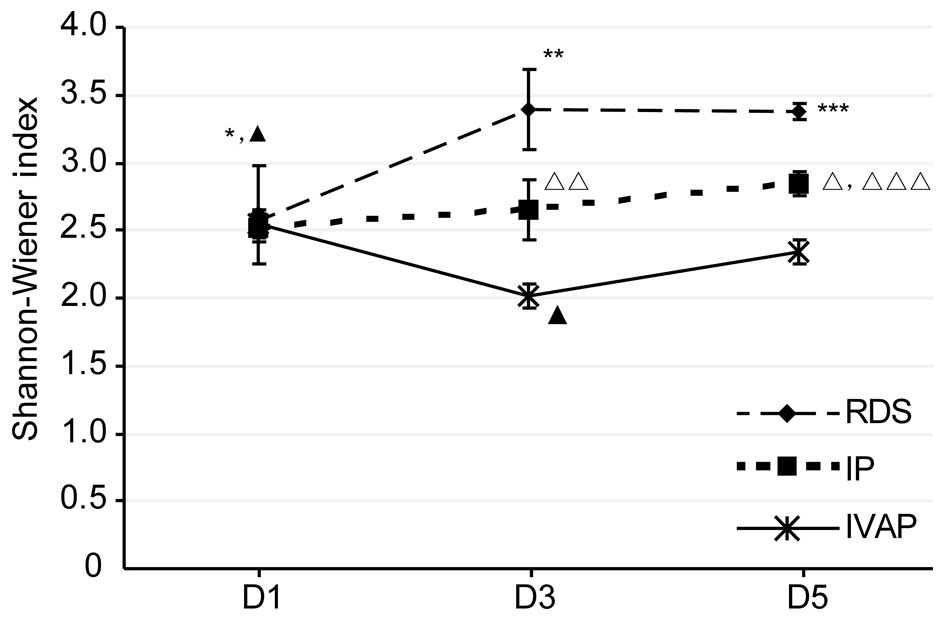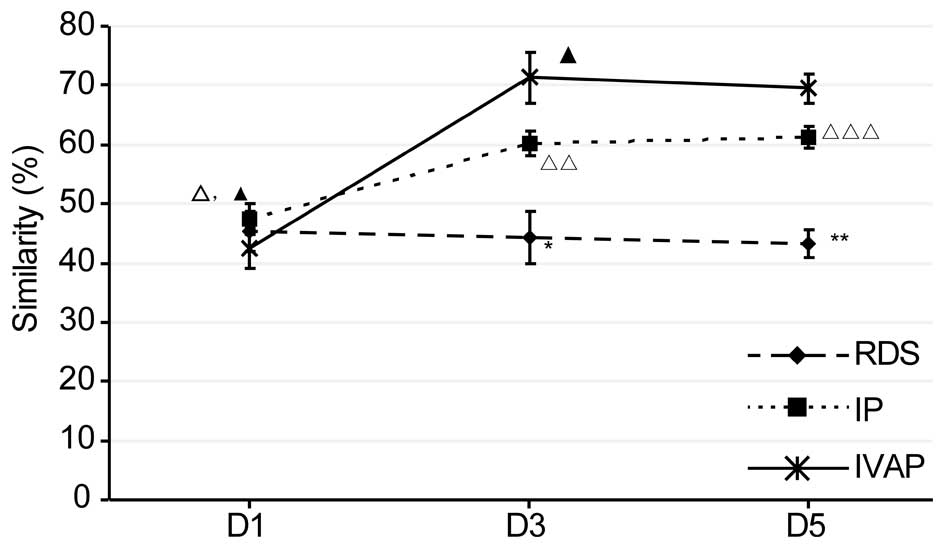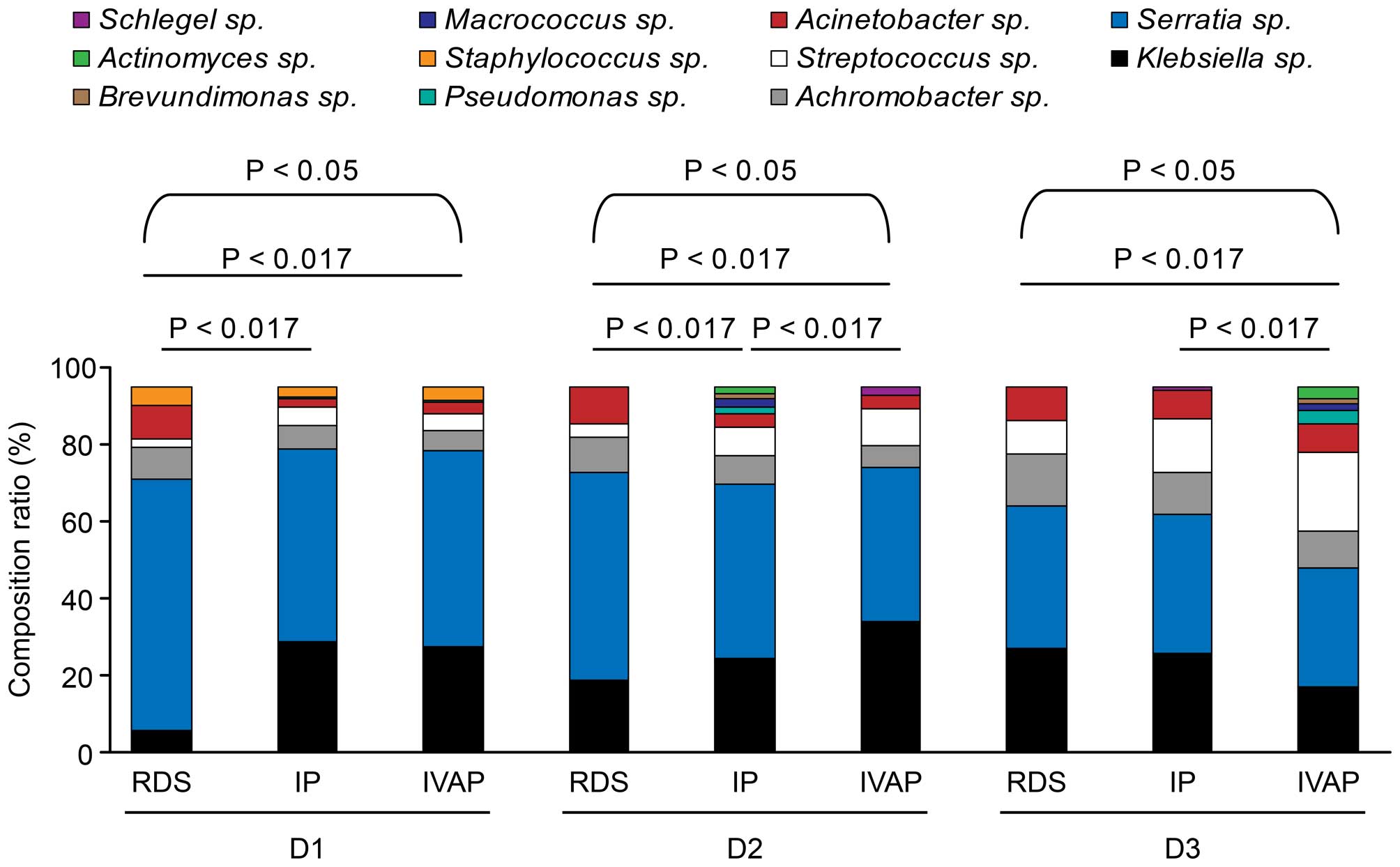Microfloral diversity in the lower respiratory tracts of neonates with bacterial infectious pneumonia combined with ventilator‑associated pneumonia
- Authors:
- Published online on: October 25, 2016 https://doi.org/10.3892/mmr.2016.5886
- Pages: 5223-5230
Metrics: Total
Views: 0 (Spandidos Publications: | PMC Statistics: )
Total PDF Downloads: 0 (Spandidos Publications: | PMC Statistics: )
Abstract
Bacterial infectious pneumonia is one of the major causes of mortality in neonates, particularly when the neonates suffer from ventilator‑associated pneumonia (VAP). However, the causes of pneumonia are difficult to define. Thus, the present study focused on understanding the diversity of microflora in the lower respiratory tract to elucidate the causes. The experimental groups comprised newborns who suffered from infectious pneumonia with or without VAP (IVAP and IP groups, respectively), whereas the control group comprised newborns who suffered from respiratory distress syndrome (RDS) without VAP (RDS group). Following 1, 3 and 5 days of ventilation, sputum samples were collected and the DNA was extracted. The DNA was amplified and separated, and the 16S rDNA was then sequenced and analyzed for diversity. The results of the diversity and Shannon‑Wiener indices were ordered as follows: IVAP group < IP group < RDS group. The percentages of Streptococcus sp., Serratia sp. and Achromobacter sp. in the IP and IVAP groups were higher, compared with those in the RDS group, whereas the percentages of Klebsiella sp. and Acinetobacter sp. were lower on day 1. The percentages of Klebsiella sp. and Streptococcus sp. on days 1 and 3 were ordered as follows: IVAP group > IP group > RDS group, and the percentages of Serratia sp., Acinetobacter sp. and Achromobacter sp. were ordered as follows: IVAP group < IP group < RDS group. After 3‑5 days, the percentages of Klebsiella sp., Acinetobacter sp., Streptococcus sp., Serratia sp. and Achromobacter sp. in the IVAP group were lower, compared with those in the RDS and IP groups. It was concluded that the decreased microfloral diversity, increased constituent ratios of Klebsiella sp. and Streptococcus sp., and decreased ratios of Serratia sp. and Acinetobacter sp. in the lower respiratory tract of neonates suffering from pneumonia may be indicators of VAP.



